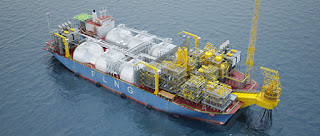Rouhani’s Astana trip without energy deal
Iranian President Hassan Rouhani’s visit to Kazakhstan on December 22 ended without any energy deal. A source in Iran’s Oil Ministry told Trend that “no talks were scheduled to be held about oil and gas issues with Kazakhstan”. However, several major energy projects have been negotiated between two Caspian littoral nations in the last several months: refinery and power plant construction projects as well as oil swap. Of course, Rouhani said in Kazakhstan that both Iran and Kazakhstan are oil and gas exporters and can cooperate in this sector. “We can receive Kazakh oil in Caspian Sea and deliver the same amount of oil to Persian Gulf,” Iranian president said Dec. 22. Oil swap Iran is preparing to resume oil swap with Caspian littoral states. The capacity of storage facilities in Iran's Neka port on the Caspian shore is being increased to about 2.5 million barrels per day (mb/d), director of Iran's North Oil Terminal Hamid Reza Shahdoust said previously. Current...


